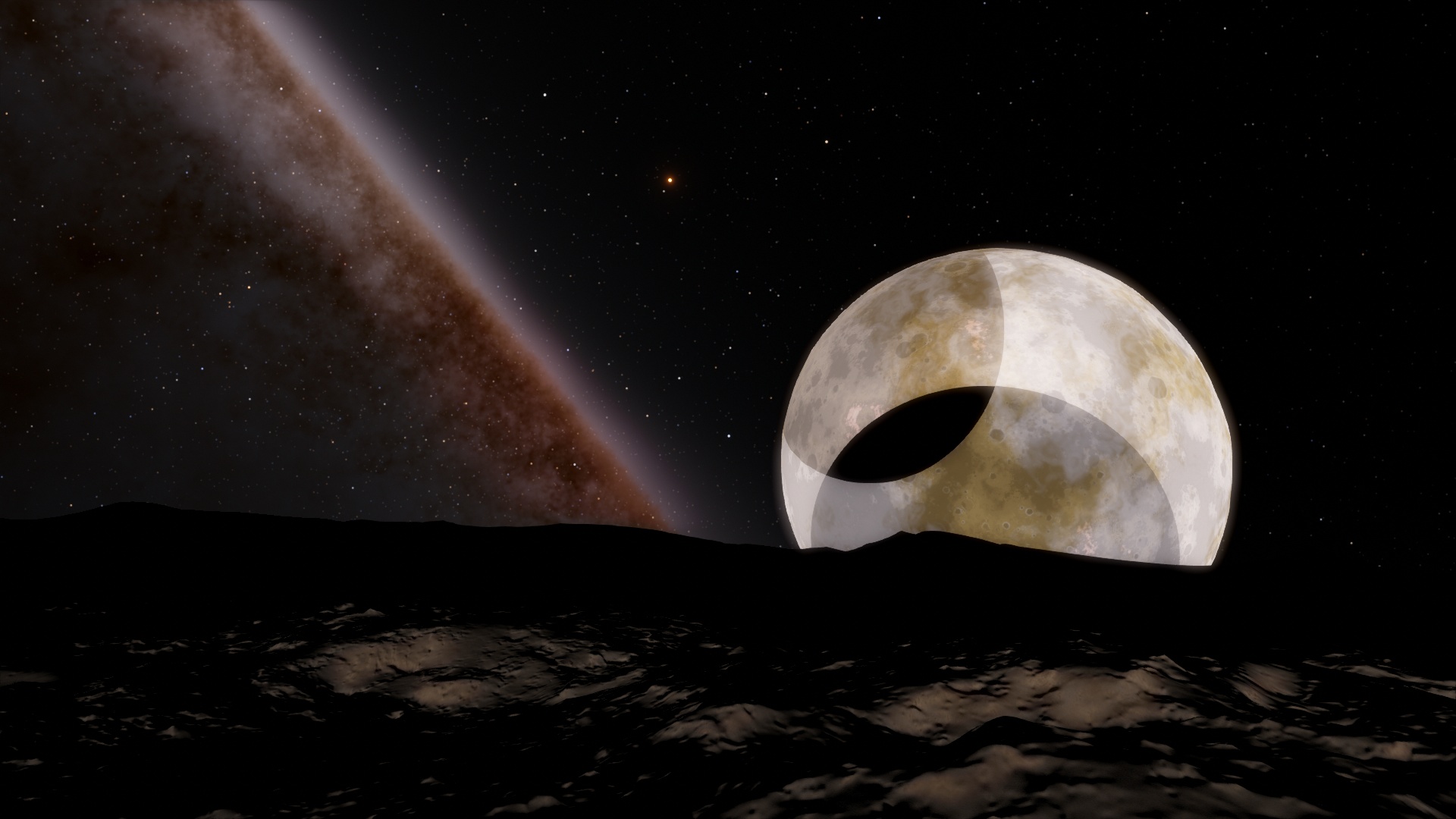Here is the explanation: This is from a binary star system where one star is red, and the other is blue. Both stars are eclipsing the moon in the foreground, onto the planet in the background. In the areas where light from both stars falls, the planet looks as it normally would. In the upper-most circle the blue starlight is filtered out, but the red gets through. In the bottom circle the red light is filtered out, and only the blue gets through. In the center portion the light from both stars is blocked, so it gets no light.
Because this planet has no atmosphere, the shadows remain crisp along its surface.



Very nice, thanks for the explanation!
Now I wonder if
You’re welcome, and I agree!